Computers
The Apple iMac 24-inch M3: A Vibrant Splash of Power and Style for the Modern Home and Office
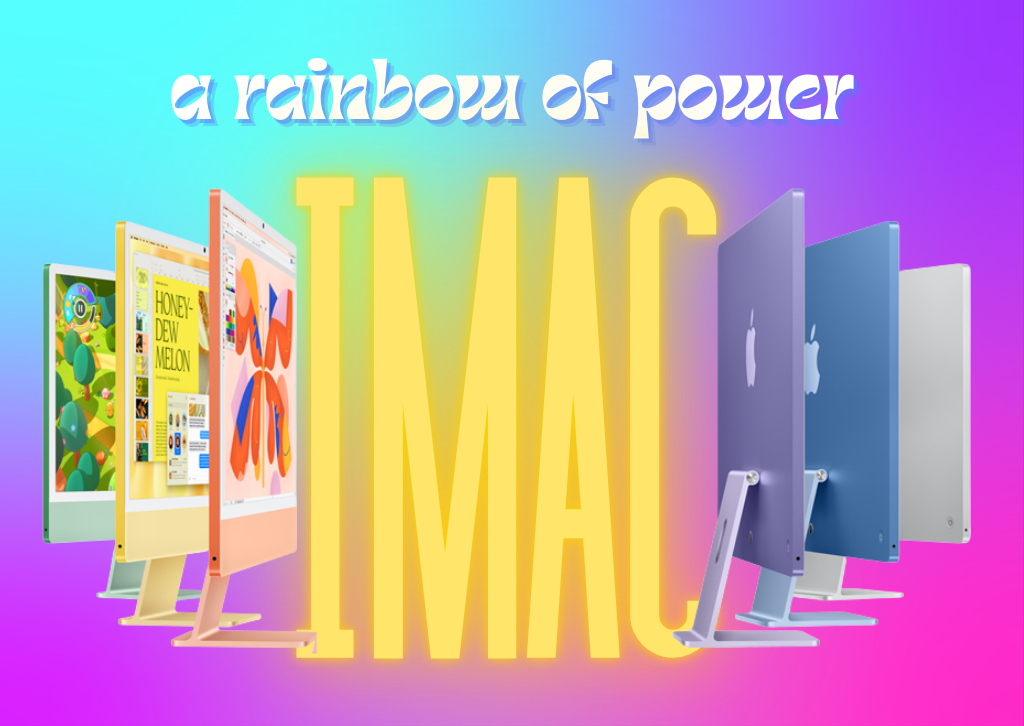
A deep dive into Apple’s latest all-in-one, exploring its stunning design, impressive performance, and who should be clicking “buy.”
In the world of personal computing, few products command the iconic status of the Apple iMac. For decades, it has been the benchmark for all-in-one desktop design, a testament to the idea that a computer can be both powerful and beautiful. From its candy-colored G3 beginnings to the elegant, aluminum-clad models that have graced desks for the last fifteen years, the iMac has always been more than just a tool; it’s been a statement piece. With the introduction of Apple Silicon, the iMac underwent its most radical transformation in a generation, emerging with a shockingly thin profile and a vibrant new personality.
Now, with the arrival of the M3 chip, Apple has given its 24-inch iMac a significant internal upgrade, boosting its performance and capabilities while retaining the celebrated design that made its M1 predecessor a runaway success. This isn’t a ground-up redesign, but rather a calculated refinement of a winning formula. The new iMac is faster, more efficient, and more capable than ever before, solidifying its position as the premier all-in-one computer for a vast swath of users.
This review will take an in-depth look at the 2024 24-inch iMac with the M3 chip. We’ll explore its breathtaking design and color options, dissect the quality of its 4.5K Retina display, and push the new M3 chip to its limits to see what it can really do. We’ll also examine its features, from the 1080p camera to the surprisingly robust speaker system, and break down the pricing and configurations to help you decide if this is the right computer for you. Is the M3 iMac the perfect blend of style and substance? Let’s find out.
A Symphony of Colors: Design and Aesthetics
Unboxing the 24-inch iMac is an experience in itself. Apple has honed its packaging to an art form, and the reveal of the impossibly thin machine is still a moment of genuine delight. Measuring a mere 11.5 millimeters in thickness, the iMac has a profile more akin to a modern tablet than a powerful desktop computer. This feat of engineering is made possible entirely by the efficiency of the M3 chip, which requires far less space for cooling than the Intel processors of old. The result is a computer that seems to defy physics, a slender pane of glass and aluminum that feels both futuristic and timeless.
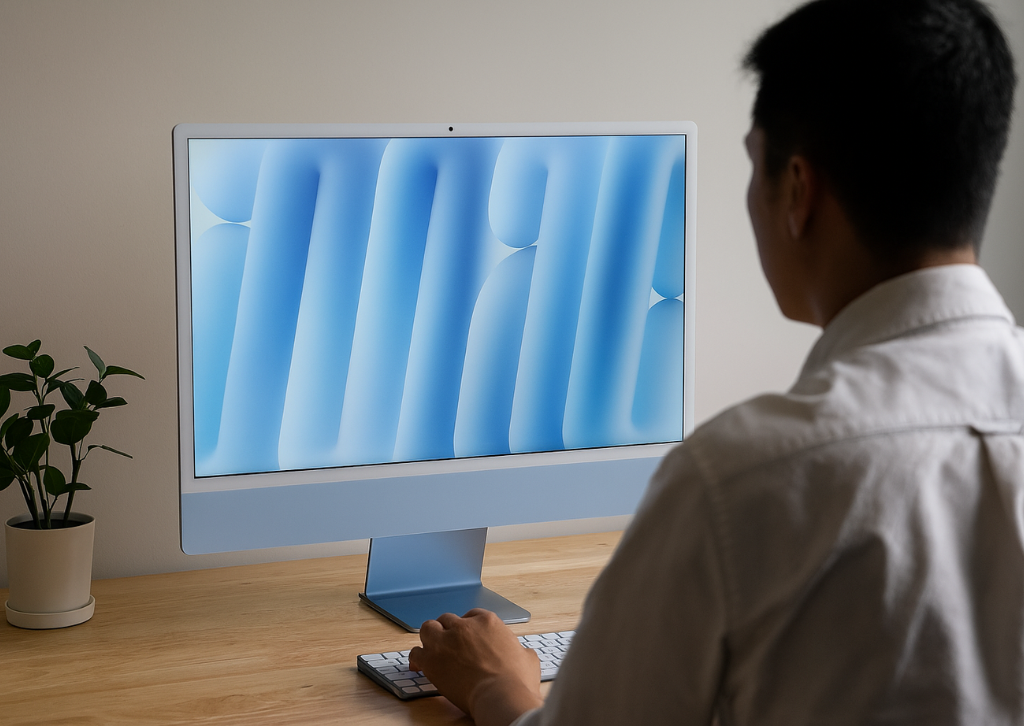
The design is a masterclass in minimalism. The front is dominated by the 24-inch display, surrounded by off-white bezels that, while not as slim as some might prefer, serve to frame the content and blend into most home environments. Below the screen sits the iconic “chin,” a strip of colored aluminum that houses the computer’s logic board, speakers, and cooling system. While some critics have lamented the continued existence of the chin, it’s an integral part of the iMac’s design, allowing the screen portion to be so astonishingly thin. It also serves as a vibrant splash of color that gives the machine its unique personality.
And what a personality it is. Apple offers the M3 iMac in a stunning array of seven colors: Blue, Green, Pink, Silver, Yellow, Orange, and Purple. This is a welcome departure from the sea of silver and space gray that dominates the tech landscape. The colors are applied in a beautiful two-tone finish, with a softer, more pastel shade on the front chin and a bolder, more saturated hue on the back and the stand. It’s a thoughtful touch that adds visual depth and makes the iMac a true centerpiece for any room. The classic Silver remains for the traditionalists, but the vibrant options are where the iMac truly shines. The Blue is deep and professional, the Green is fresh and lively, and the Pink is soft and inviting. The higher-end models also come in Yellow, Orange, and Purple, offering even more ways to express your personal style.
This attention to color extends to the included accessories. The Magic Keyboard, Magic Mouse, and optional Magic Trackpad all come color-matched to your iMac, creating a beautifully cohesive desktop setup. The power cable is even a color-matched woven design, a small but significant detail that showcases Apple’s commitment to a holistic design philosophy.
The build quality, as expected from Apple, is impeccable. The chassis is crafted from a single sheet of aluminum, much of it recycled, giving it a solid, premium feel. The stand is sturdy and elegant, though it’s not without its faults. The biggest ergonomic complaint is the lack of height adjustment. You can tilt the screen, but you can’t raise or lower it, which can be a problem for taller users or those with specific ergonomic needs. Apple does offer a model with a VESA mount adapter for those who want to use their own stand or arm, but it’s a build-to-order option that forgoes the included stand.
Despite this one notable flaw, the design of the 24-inch iMac is an overwhelming success. It’s a machine that is a joy to look at and to use, a piece of technology that seamlessly blends into your life and your home. It’s a computer that doesn’t demand to be hidden under a desk but instead begs to be displayed.
A Window to Your World: The 4.5K Retina Display
The centerpiece of the iMac experience is, without a doubt, its stunning display. Apple has long been a leader in screen technology, and the 24-inch iMac’s 4.5K Retina display is a testament to that legacy. While technically measuring 23.5 inches diagonally, the screen feels spacious and immersive, offering a massive canvas for work and play.
The specifications are impressive. The display boasts a resolution of 4480-by-2520, which translates to a pixel density of 218 pixels per inch (PPI). At a normal viewing distance, this means you simply cannot discern individual pixels. Text is razor-sharp, as if it were printed on a page. Photos and videos are rendered with incredible detail and clarity. It’s a level of sharpness that, once you’ve experienced it, is hard to live without.
But resolution is only part of the story. The iMac’s display also excels in color and brightness. It supports the P3 wide color gamut, which means it can display a broader range of colors than a standard sRGB display. This is particularly noticeable in vibrant reds and greens, which appear richer and more true-to-life. With support for over a billion colors, gradients are smooth and subtle, free from the banding that can plague lesser displays. For photographers, videographers, and graphic designers, this color accuracy is a huge boon.
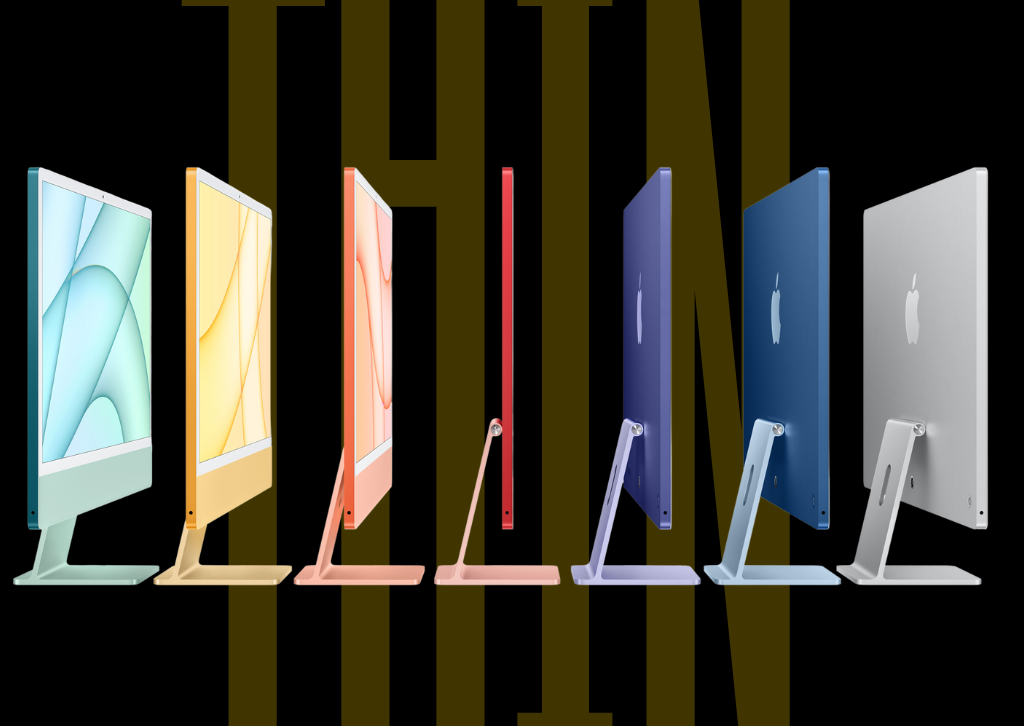
The screen is also incredibly bright, rated at 500 nits. This makes it comfortable to use in even brightly lit rooms, and the anti-reflective coating does a commendable job of minimizing glare. Apple’s True Tone technology is also on board, which automatically adjusts the white balance of the display to match the ambient lighting in your room. This makes for a more natural, paper-like viewing experience that is easier on the eyes over long periods.
Watching movies on the iMac is a treat. The 4.5K resolution means that 4K content looks fantastic, with crisp details and vibrant colors. The display is not, however, an HDR (High Dynamic Range) panel, nor does it feature Apple’s ProMotion technology for variable refresh rates up to 120Hz. While these omissions are understandable at this price point, they are features that are becoming more common on other devices, and their absence is felt by those who have grown accustomed to them. The refresh rate is locked at 60Hz, which is perfectly smooth for most tasks but may be a slight letdown for gamers or those who enjoy the buttery-smooth scrolling of a high-refresh-rate display.
These are, however, minor quibbles in the grand scheme of things. For the vast majority of users, the iMac’s display is nothing short of spectacular. It’s a bright, sharp, and color-accurate window into your digital world, and it remains one of the single best reasons to choose an iMac over the competition.
The Heart of the Machine: M3 Chip and Performance
The headline feature of this new iMac is the M3 chip, the latest generation of Apple’s custom silicon. Built on a cutting-edge 3-nanometer process, the M3 is a marvel of efficiency and power. It integrates the CPU, GPU, Neural Engine, and memory into a single system on a chip (SoC), which allows for incredible performance gains and remarkable power efficiency.
The M3 chip in the iMac comes in two main configurations. The base model features an 8-core CPU (with four performance cores and four efficiency cores) and an 8-core GPU. The higher-end models step up to a more powerful 10-core GPU. Both versions feature a 16-core Neural Engine for machine learning tasks and support for up to 24GB of unified memory.
So, what does this mean in the real world? In short, the M3 iMac is a fantastically capable machine. For everyday tasks like browsing the web (even with dozens of tabs open), managing email, streaming 4K video, and running office applications, the M3 is utterly unfazed. Everything happens instantly, with a level of smoothness and responsiveness that is deeply satisfying. The machine wakes from sleep instantly, apps launch in a heartbeat, and the entire system feels incredibly fluid.
Where the M3 really starts to impress is with more demanding workloads. In creative applications like Adobe Photoshop and Lightroom, the iMac handles high-resolution images with ease. Edits are applied in real-time, and exporting large batches of photos is significantly faster than on older Intel-based iMacs. The performance uplift over the M1 iMac is also noticeable, particularly in GPU-intensive tasks.
Light video editing in iMovie or even Final Cut Pro is also a smooth experience. The M3’s media engine, with its dedicated hardware for video encoding and decoding, allows the iMac to handle multiple streams of 4K ProRes video without breaking a sweat. For hobbyist creators and aspiring YouTubers, the iMac is more than powerful enough to handle their entire workflow.
Gaming on the Mac has always been a bit of a mixed bag, but the M3 chip is a significant step in the right direction. The new GPU architecture includes hardware-accelerated ray tracing and mesh shading, features previously found only on high-end PC graphics cards. This allows for more realistic lighting, shadows, and reflections in supported games. While the Mac gaming library is still smaller than its Windows counterpart, titles like “Baldur’s Gate 3” and “No Man’s Sky” run surprisingly well on the M3 iMac, offering a legitimate gaming experience.
It’s important to talk about memory. The M3 iMac comes with 8GB of unified memory as standard. For light use, this is perfectly adequate. However, because the memory is part of the SoC, it cannot be upgraded later. If you plan on doing any serious multitasking, creative work, or if you simply want to future-proof your machine, upgrading to 16GB or even 24GB at the time of purchase is highly recommended. For most people, 16GB will be the sweet spot.
Similarly, the base model comes with a 256GB SSD. While the SSD is incredibly fast, 256GB can fill up quickly. Upgrading to at least 512GB is a wise investment for anyone who plans on storing a significant amount of photos, videos, or applications on their machine.
The M3 iMac is a performance powerhouse for its intended audience. It’s a machine that will feel fast and responsive for years to come, and it has enough power under the hood to handle a wide range of tasks, from the mundane to the creative.
Features That Complete the Experience
A great computer is more than just a processor and a screen. It’s the sum of its parts, and Apple has equipped the iMac with a host of features that elevate the overall experience.
Camera: The iMac features a 1080p FaceTime HD camera, a significant step up from the 720p cameras found in many laptops. But the real magic comes from the M3’s advanced image signal processor (ISP). The ISP works in real-time to improve video quality, with better noise reduction, greater dynamic range, and more accurate white balance. The result is that you will look your best on video calls, even in less-than-ideal lighting conditions.
Audio: The sound system in the 24-inch iMac is nothing short of astonishing for an all-in-one computer. It features a high-fidelity six-speaker system with two pairs of force-cancelling woofers. This setup produces a wide, immersive stereo sound that is surprisingly rich and full, with a decent amount of bass. The iMac also supports Spatial Audio with Dolby Atmos, which creates a three-dimensional soundscape when listening to supported music or watching movies. The sound is so good that you likely won’t feel the need for external speakers.
Microphones: Complementing the excellent camera and speakers is a “studio-quality” three-mic array. The microphones use directional beamforming to focus on your voice and reduce background noise. Whether you’re on a video call or recording a voiceover, your voice will come through with impressive clarity.
Connectivity: The port situation on the iMac depends on which model you choose. The base model comes with two Thunderbolt / USB 4 ports. These are incredibly fast and versatile, supporting high-speed data transfer (up to 40Gb/s), external displays (up to a 6K resolution), and charging. However, two ports can feel limiting. The higher-end models are a better choice for most, as they include two additional USB 3 ports, which are perfect for connecting legacy peripherals like printers, hard drives, and thumb drives.
For wireless connectivity, the iMac is equipped with the latest Wi-Fi 6E for faster, more reliable wireless internet, and Bluetooth 5.3 for connecting accessories. The power adapter also has a clever trick up its sleeve: on the higher-end models, it includes a Gigabit Ethernet port, which is a brilliant way to reduce cable clutter on your desk. This is a $30 add-on for the base model.
Who is the iMac For?
The 24-inch M3 iMac is a wonderfully versatile machine, but it’s not for everyone. Its ideal user is someone who values simplicity, elegance, and a seamless, all-in-one experience.
The Ideal User:
- Students and Families: The iMac is a perfect computer for a household. It’s great for homework, research, and creative projects. Its stunning design and array of colors make it a welcome addition to a dorm room, living room, or kitchen counter.
- Home Office Users: For those who work from home and need a reliable, powerful, and beautiful machine for productivity tasks, video conferencing, and email, the iMac is an excellent choice.
- Creative Hobbyists: If you’re a photographer who loves to edit photos, an aspiring YouTuber putting together your first videos, or a musician recording demos, the iMac has more than enough power to fuel your passions.
- The Aesthetically Minded: If you care about design and want a computer that complements your home or office decor, there is simply no better-looking all-in-one on the market.
Who Should Look Elsewhere:
- Power Users: If your workflow involves heavy-duty video editing with multiple 8K streams, complex 3D rendering, or intensive software development, you’ll likely need the extra power and connectivity of a Mac Studio or a high-end MacBook Pro with an M3 Pro or M3 Max chip.
- Serious Gamers: While the M3 is a capable gaming chip, the Mac is still not the primary platform for hardcore gamers. A dedicated Windows gaming PC will offer a larger game library and more powerful graphics options.
- Those Who Need a Larger Screen: 24 inches is a great size for most, but if you need a larger canvas for your work, you might consider a Mac mini paired with a larger third-party display or Apple’s own Studio Display.
Pricing and Configurations
The 24-inch iMac with M3 starts at $1,299. For that price, you get the 8-core CPU, 8-core GPU, 8GB of unified memory, a 256GB SSD, and two Thunderbolt / USB 4 ports. This model is available in Blue, Green, Pink, and Silver.
The more popular and recommended model starts at $1,499. This configuration upgrades you to the 10-core GPU and adds two USB 3 ports and the Gigabit Ethernet power adapter. It also comes with the Magic Keyboard with Touch ID, and is available in all seven colors.
From there, you can upgrade the memory and storage. Moving from 8GB to 16GB of memory costs $200, and going to 24GB is a further $200. Upgrading the storage from 256GB to 512GB is $200, and going to 1TB is another $200. A fully maxed-out iMac can approach $2,500, so it’s important to choose your configuration wisely at the time of purchase.
The Verdict
The 24-inch iMac with the M3 chip is a triumph of design and engineering. It takes a beloved and successful product and makes it meaningfully better. While the design remains unchanged from the M1 generation, it didn’t need to change. It is still the most beautiful and elegant all-in-one computer on the market, a machine that is a genuine pleasure to have on your desk.
The M3 chip provides a significant performance boost, making an already fast machine even faster. It’s a computer that is more than capable of handling the needs of the vast majority of users, from students and families to creative professionals. The stunning 4.5K Retina display is a joy to behold, and the excellent camera, microphone, and speaker systems make it a fantastic machine for communication and entertainment.
Of course, it’s not perfect. The lack of height adjustment on the stand is an ergonomic oversight, and the limitation of only two ports on the base model is a bit stingy. The lack of user upgradability for RAM and storage means you need to be careful with your initial configuration.
But these are minor blemishes on an otherwise outstanding product. The iMac is more than just the sum of its specs; it’s about the overall experience. It’s a computer that just works, and works beautifully. It’s a machine that simplifies your digital life and brings a splash of color and joy to your workspace. For anyone in the market for a premium all-in-one desktop, the 24-inch M3 iMac is not just a great choice; it’s the one to beat.
Computers
The Innovation Deficit: How Apple Surrendered Its Revolutionary Edge to Bolder Competitors
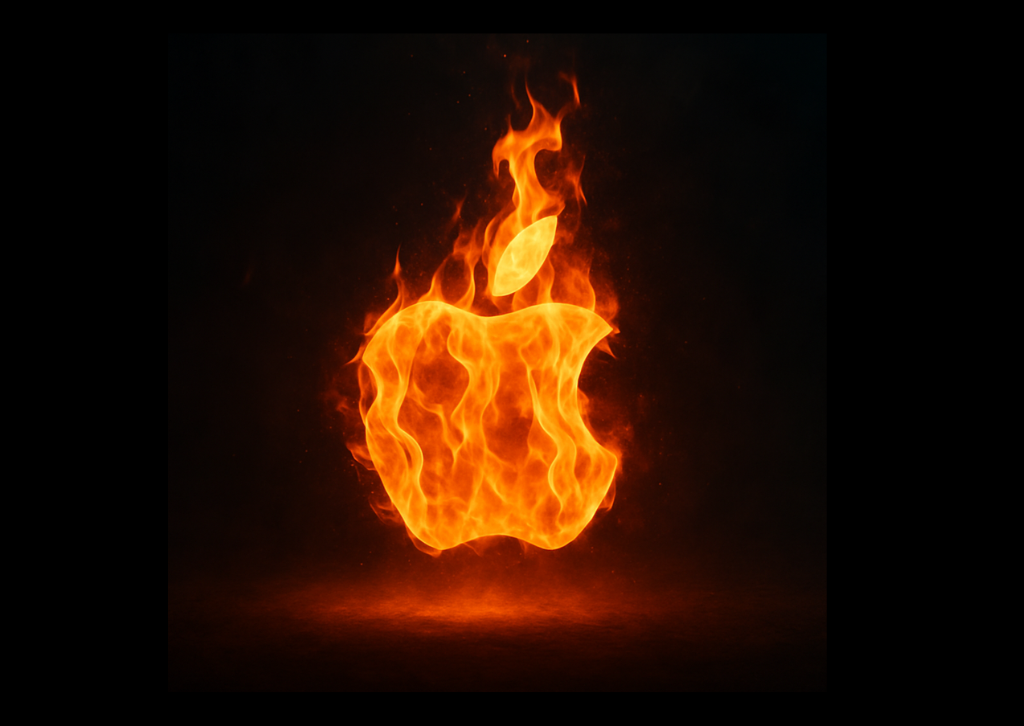
For years, Apple didn’t just lead the tech industry—it reimagined it. The company that gave us the iPhone, MacBook Air, and iPad didn’t iterate on existing ideas; it created entirely new categories that fundamentally changed how we interact with technology. But somewhere between the passing of Steve Jobs and today’s quarterly earnings calls, Apple transformed from a company that thought different into one that thinks safe. While competitors push boundaries with foldable devices, AI-integrated hardware, and genuinely novel form factors, Apple has settled into a predictable rhythm of marginal upgrades wrapped in premium pricing.
The contrast has never been starker, and for longtime Apple enthusiasts, it’s becoming increasingly difficult to justify the brand loyalty that once seemed unshakeable.
The M-Chip Monotony: When Your Best Innovation Is What’s Inside
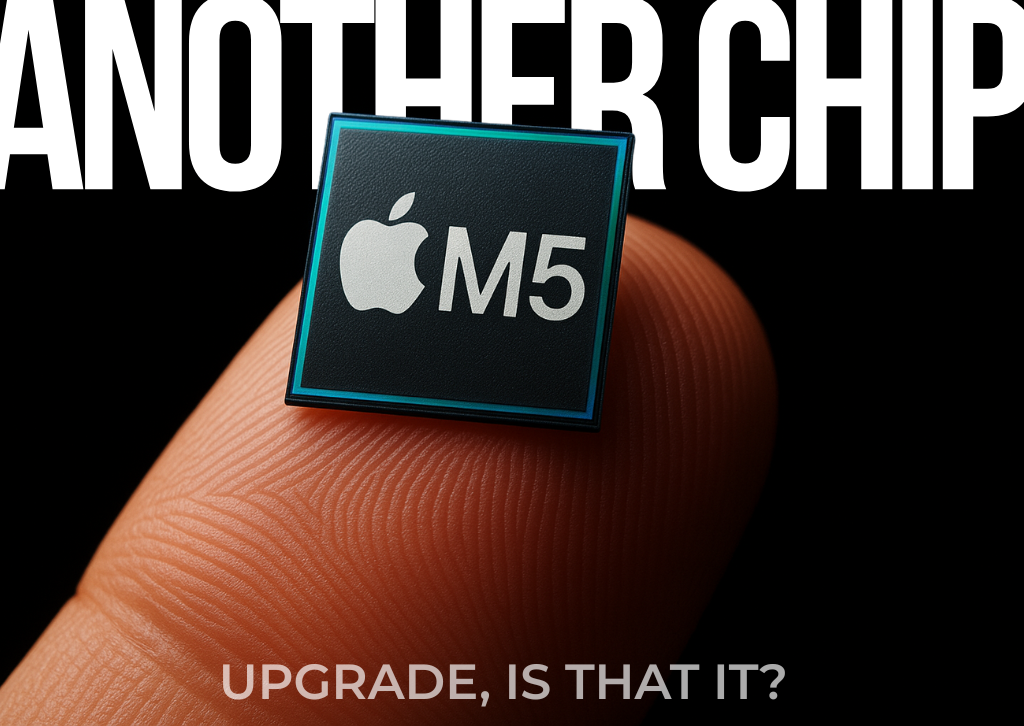
Apple’s transition to its own silicon marked a genuine technological achievement. The M-series chips deliver impressive performance and efficiency, representing years of engineering excellence. But here’s the problem: a faster processor doesn’t constitute innovation when the device housing it remains fundamentally unchanged.
Consider the recent iPad lineup refresh with the M5 chip. Yes, it’s more powerful. Yes, benchmarks will show impressive gains. But what problem does this solve for actual users? The previous generation was already overpowered for the software ecosystem Apple provides. iPadOS remains frustratingly limited, unable to take full advantage of the hardware capabilities underneath. It’s like installing a Formula 1 engine in a minivan and calling it revolutionary.
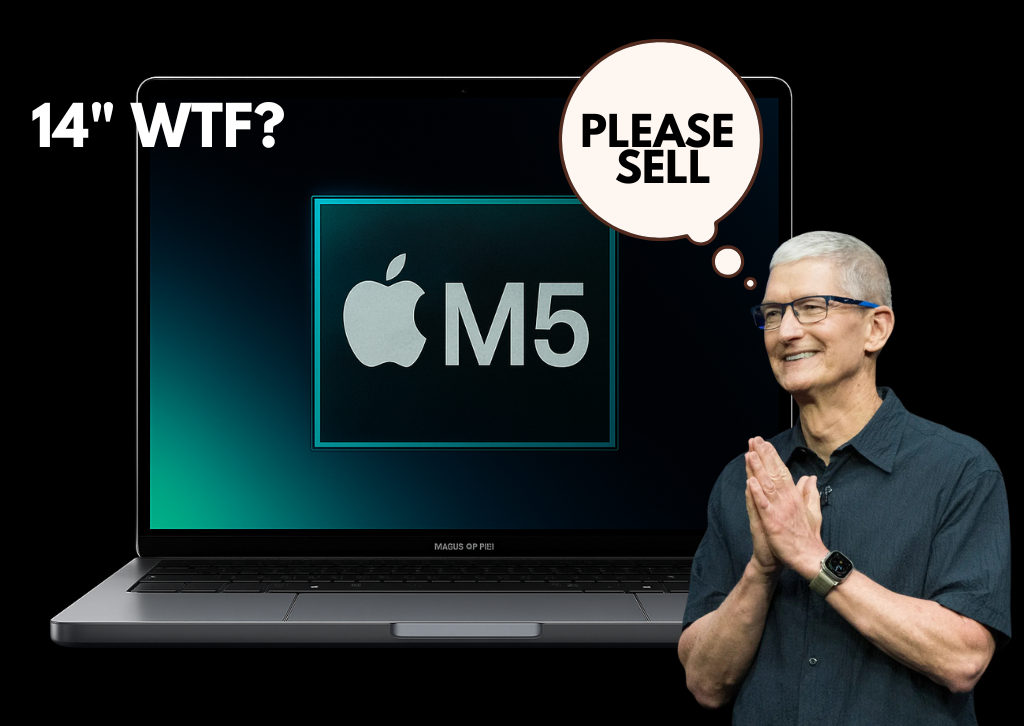
The same pattern repeats across the MacBook line. The latest MacBook Pro arrives with the M5 chip, but only in a 14-inch configuration at launch—a size that feels increasingly cramped for professional workflows in an era where screen real estate directly correlates to productivity. Many professionals and creative users want larger displays for video editing, design work, and multitasking. The industry has moved toward recognizing that serious work often demands serious screen space, yet Apple seems content to delay larger options, forcing users to wait or compromise.
This is the innovation strategy of a company playing it safe: take the same device, swap the chip, adjust the marketing materials, and ship it. There’s no reimagining of what these devices could be, no bold bets on new form factors, no willingness to take the risks that once defined Apple.
The Apple Watch: Treading Water in a Sea of Possibilities
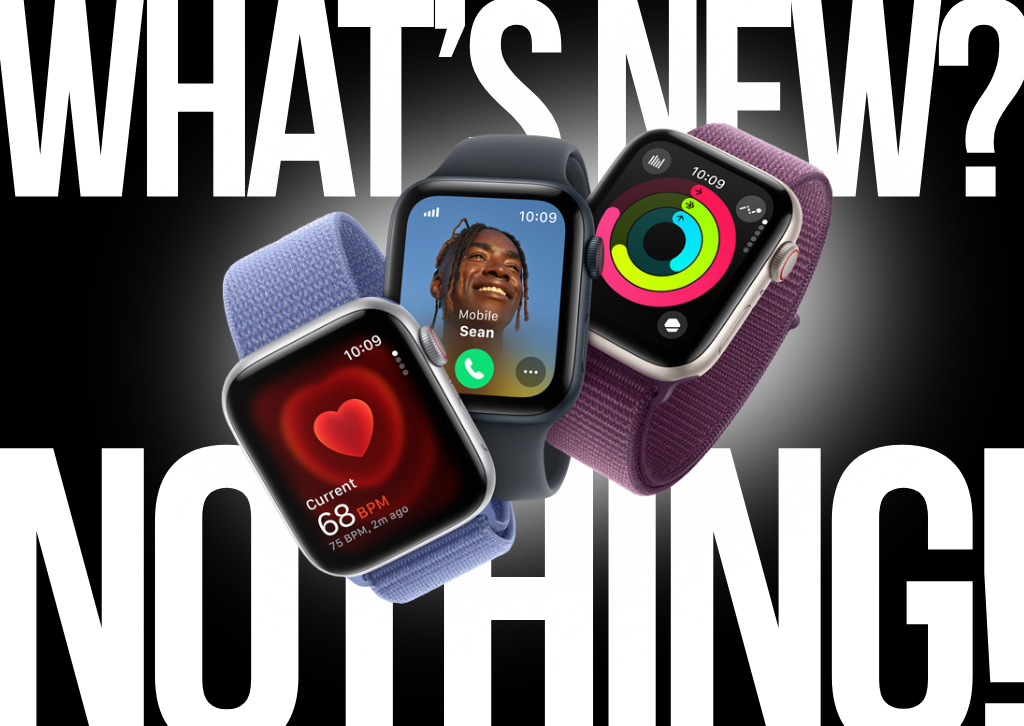
When the Apple Watch launched in 2015, it promised to do for wearables what the iPhone did for smartphones. Nearly a decade later, it remains essentially the same rectangular screen strapped to your wrist, with incremental sensor additions and slightly refined cases.
Compare this to the innovation happening elsewhere in wearables. Companies are experimenting with circular displays, advanced health monitoring that goes beyond heart rate and blood oxygen, and integration with broader smart home ecosystems. Samsung’s Galaxy Watch line has pushed into new territory with rotating bezels, longer battery life, and more open app ecosystems. Google’s Pixel Watch brings together Fitbit’s health tracking heritage with deeper Android integration.
Meanwhile, Apple’s updates feel like ticking boxes on a spec sheet rather than solving real problems. A slightly faster processor. A minor redesign. Another health sensor that works only in limited circumstances. Where’s the innovation that makes you say “I need to upgrade”? Where’s the feature that fundamentally changes how we think about wearable technology?
The Apple Watch has become the perfect metaphor for modern Apple: competent, polished, expensive, and utterly predictable.
The Foldable Future Apple Refuses to Embrace
Perhaps nowhere is Apple’s innovation deficit more glaring than in its complete absence from the foldable device market. While competitors have spent years iterating, improving, and refining foldable technology, Apple watches from the sidelines, apparently content to let others define the future of mobile computing.
Huawei’s Mate X series has evolved through multiple generations, with devices like the Mate X5 and Mate XT Ultimate Design offering stunning displays that fold seamlessly, providing tablet-sized screens in phone-sized packages. These aren’t concept devices or expensive experiments—they’re increasingly mainstream products that millions of users have adopted.
Samsung’s Galaxy Z Fold and Z Flip lines have matured considerably, with the latest iterations featuring durable hinges, minimal creasing, and software optimized for multitasking across multiple screen configurations. The Galaxy Z Fold 7 represents the culmination of years of refinement, offering a genuinely versatile device that adapts to different use cases throughout the day.
Google has entered the space with the Pixel Fold, bringing its computational photography expertise and clean Android experience to a foldable form factor that feels thoughtfully designed rather than gimmicky.
These devices represent genuine innovation—the willingness to experiment with new form factors that might fundamentally change how we use technology. They’re not perfect, but they represent progress, evolution, and most importantly, courage.
Apple, meanwhile, releases rumors and patents about foldable devices while shipping yet another rectangular glass slab. The iPhone remains trapped in a design language established over a decade ago, with changes so incremental that cases from multiple generations often remain compatible. Where Samsung users can choose between traditional smartphones or devices that unfold into tablets, Apple users get to choose between three sizes of essentially the same phone.
The message is clear: Apple will wait until foldables are safe, proven, and commodified before entering the market. This is the opposite of the company that launched the iPhone when the entire industry thought smartphones needed keyboards.
Vision Pro: A Billion-Dollar Miscalculation

If Apple’s incremental updates demonstrate a lack of ambition, the Vision Pro represents ambition utterly disconnected from market reality. Priced at $3,499, Apple’s entry into mixed reality feels like a product designed by engineers who never asked whether anyone actually wanted it.
The Vision Pro is undeniably impressive from a technical standpoint. The display resolution is remarkable, the eye-tracking technology works well, and the industrial design maintains Apple’s premium aesthetic. But none of this addresses the fundamental question: what problem does this solve that justifies its existence?
Users sit alone, isolated by the headset, navigating interfaces that work better on traditional screens. The device is heavy, uncomfortable for extended use, and prohibitively expensive for all but the most devoted early adopters or professionals with specific use cases. The app ecosystem remains sparse, and the use cases that would justify the investment remain elusive.
Meanwhile, Meta took a completely different approach with Ray-Ban Meta smart glasses. Rather than trying to replace our devices with an isolated VR experience, Meta created glasses that augment reality while maintaining social connection and normal interactions. You can capture photos and videos from your perspective, take calls, listen to music, and access AI assistance—all while still engaging with the world around you. They look like normal glasses, cost a fraction of the Vision Pro’s price, and solve actual problems people have in their daily lives.
The contrast couldn’t be clearer. Apple swung for the fences with a product virtually no one needs at a price almost no one can afford. Meta created something genuinely useful, accessible, and integrated into normal life. Which approach sounds more like the revolutionary Apple of old?
The iPhone’s Incremental Infinity
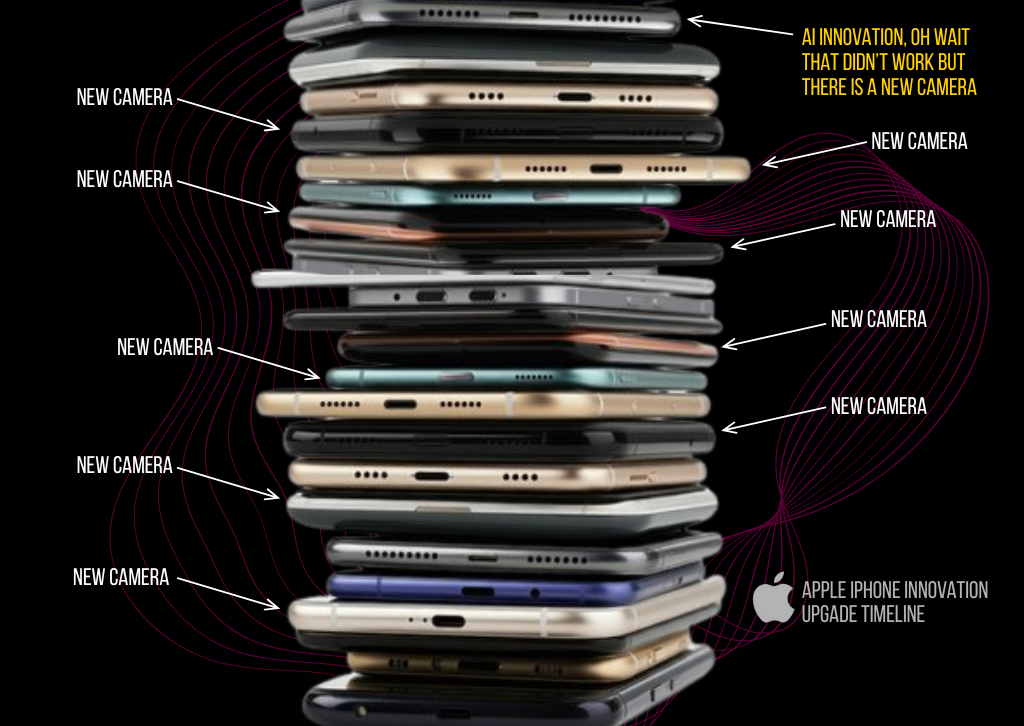
Perhaps nothing exemplifies Apple’s innovation problem more than the iPhone’s evolution over the past decade. Each year brings a new model with marginal improvements presented as revolutionary breakthroughs. A slightly better camera system. A modestly faster processor. A minor design tweak. And that’s about it.
The iPhone 17 Pro cameras are excellent—among the best in the industry. But so were the cameras on the iPhone 16 Pro. And the 15 Pro before that. The improvements between generations have become so subtle that most users would struggle to identify which phone took which photo in a blind comparison.
Compare this to the innovation happening in the Android ecosystem. Samsung’s Galaxy S series integrates AI features that genuinely enhance the user experience, from real-time translation in phone calls to advanced photo editing capabilities. Google’s Pixel phones leverage computational photography to deliver stunning results from more modest hardware, demonstrating that innovation isn’t just about bigger sensors.
Foldable phones aside, competitors are experimenting with under-display cameras, advanced zoom capabilities, and AI integration that goes beyond simple filters. They’re taking risks, some of which fail, but failure is part of innovation.
Apple, meanwhile, has settled into a comfortable pattern: take last year’s phone, improve the camera slightly, bump the processor, maybe adjust the color options, and call it a new generation. This isn’t innovation; it’s iteration for the sake of maintaining a release cycle.
The Tim Cook Era: Operational Excellence Over Revolutionary Vision
It’s impossible to discuss Apple’s innovation challenges without addressing leadership. Tim Cook is an operations genius who transformed Apple into the most valuable company in the world. Under his leadership, Apple’s supply chain efficiency, profit margins, and market capitalization have reached unprecedented heights.
But operational excellence isn’t visionary leadership. Cook’s Apple is a company that perfects existing products rather than imagining new categories. It protects market share rather than creating new markets. It looks to China for manufacturing efficiency and market expansion rather than focusing on creating products so compelling that global demand becomes inevitable.
The emphasis on China is particularly noteworthy. While expanding into the world’s largest market makes obvious business sense, the focus sometimes feels disproportionate to innovation efforts. Resources and attention directed toward navigating Chinese regulations, manufacturing relationships, and market positioning might be better spent on breakthrough products that would sell themselves globally.
Steve Jobs’ Apple took massive risks. It killed successful products to make room for better ones. It entered markets where it had no presence with products that redefined categories. It was willing to be wrong, to fail, to learn, and to try again.
Tim Cook’s Apple calculates risk to six decimal places and proceeds only when success seems virtually guaranteed. This makes shareholders happy and keeps the stock price climbing, but it doesn’t change the world.
What Real Innovation Looks Like
To understand what Apple has lost, look at what competitors are achieving.
Meta is making massive bets on AI and mixed reality, creating products like the Quest headsets that democratize VR and smart glasses that integrate seamlessly into daily life. These aren’t guaranteed winners, but they represent genuine attempts to pioneer new categories.
Google continues to push boundaries with AI integration across its hardware ecosystem. The Pixel phones showcase what’s possible when software and hardware are designed together with AI as a foundational element, not an afterthought. Features like Magic Eraser, Best Take, and Audio Magic Eraser demonstrate innovation in user experience rather than just specifications.
Samsung’s foldable devices have evolved from curiosities to legitimate mainstream options, with each generation addressing previous limitations. The Galaxy Z Flip brings foldable technology to a more accessible price point, while the Z Fold caters to power users wanting maximum versatility. Samsung took risks, weathered criticism about early durability issues, and persevered to create genuinely innovative products.
Huawei, despite facing significant geopolitical challenges, continues to push technological boundaries. The Mate series showcases advanced camera systems, foldable displays, and integration with broader ecosystem devices. The company’s willingness to experiment with form factors like the tri-fold Mate XT demonstrates the kind of bold thinking that Apple once embodied.
These companies are making bets. They’re trying new things. Some will succeed, others will fail, but they’re all moving forward while Apple seems content to optimize yesterday’s ideas.
The Cost of Playing It Safe
Apple’s current strategy is financially successful—no one can argue with the numbers. But financial success and innovation aren’t the same thing, and the cost of prioritizing the former over the latter is starting to show.
The tech industry’s most exciting developments are happening without Apple’s involvement. Foldable devices, AI integration, mixed reality glasses, advanced camera systems that use computational photography rather than just bigger sensors—these innovations are coming from companies willing to risk failure in pursuit of breakthrough products.
Apple used to set the agenda. Other companies responded to what Apple created. Now, Apple responds to what others create, entering markets only after competitors have absorbed the risks and proven the concepts.
This might be a sustainable business strategy, but it’s not the Apple that changed the world. It’s not the company that had the courage to remove the floppy drive, the CD drive, and the headphone jack because it saw a better future. It’s not the company that bet everything on a touchscreen phone when the entire industry thought physical keyboards were essential.
What Apple Could Be
The frustration with Apple comes from knowing what the company is capable of achieving. Apple has the resources, talent, and ecosystem to create genuinely revolutionary products. The M-series chips prove it still has engineering excellence. The ecosystem integration shows it understands how devices should work together. The brand loyalty demonstrates users trust Apple to get things right.
Imagine an Apple that brought that excellence to foldable devices, creating the most refined, polished foldable phone on the market. Imagine Apple’s industrial design expertise applied to truly innovative wearables that go beyond the watch form factor. Imagine if Apple approached AI integration with the same thoughtfulness it once brought to touch interfaces.
These products might exist in Cupertino laboratories. The engineers probably have prototypes that would amaze us. But somewhere between the lab and the keynote stage, courage gives way to caution, and revolutionary becomes incremental.
The Path Forward
Apple doesn’t need to copy competitors, but it does need to remember what made it special. The company that changed personal computing, mobile phones, and tablets didn’t succeed by being careful. It succeeded by having vision, courage, and a willingness to risk failure in pursuit of breakthrough products.
The tools are there. The talent exists. The resources are unlimited. What’s missing is the hunger to create something that doesn’t exist yet, the willingness to be wrong, and the courage to bet big on bold ideas.
Until that changes, we’ll keep getting new iPads with faster chips, MacBooks in limited configurations, watches with incremental improvements, and phones that look identical to their predecessors. We’ll keep watching competitors pioneer new categories while Apple perfects last decade’s ideas.
The revolution won’t be televised at an Apple keynote anymore. It’s happening everywhere else, created by companies hungry enough to risk it all on an idea that might change everything.
For those of us who remember what Apple once was, that’s the most frustrating thing of all. We’re not angry because Apple is bad—we’re frustrated because it could be so much more than merely good. The gap between Apple’s potential and its current ambitions represents the greatest innovation failure of the decade: the choice not to innovate when innovation matters most.

The best tech-related articles and reviews are here at www.thetechreview.net
Computers
Apple Unveils the MacBook Pro 14″ with M5: The Next Leap in AI Performance
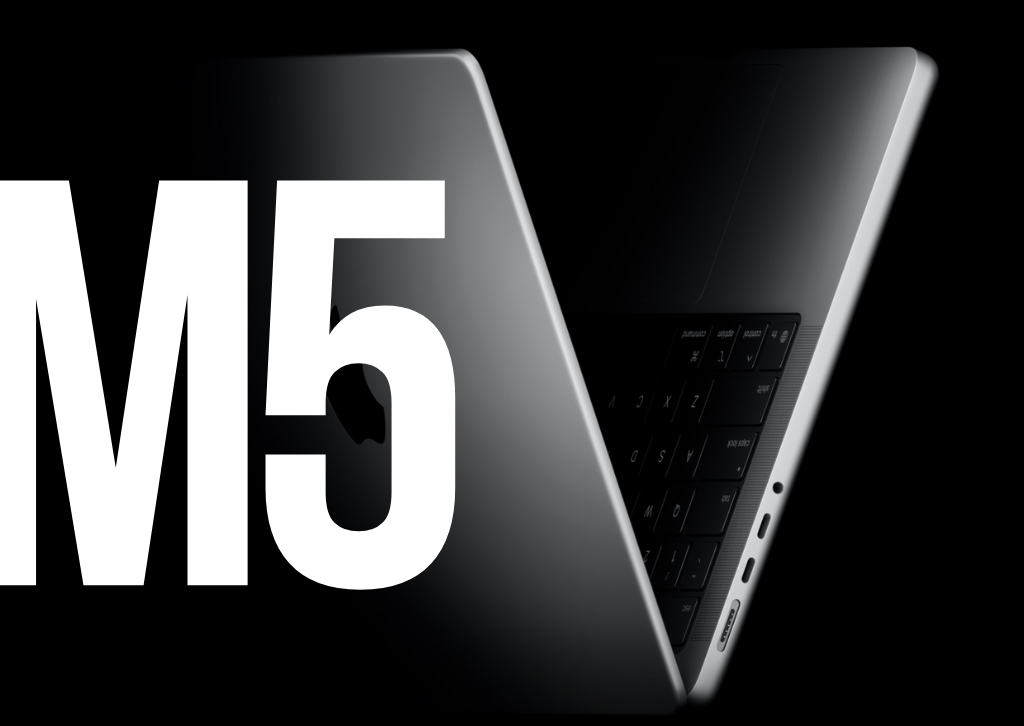
Breaking the Pattern: Apple Takes a New Approach to Mac Releases
In a departure from its recent strategy, Apple announced the new 14-inch MacBook Pro featuring its powerful M5 chip, marking a shift in how the company rolls out its professional laptop lineup. Unlike previous years when Apple launched its entire MacBook Pro range simultaneously, this time the company has led with the entry-level 14-inch MacBook Pro while the M5 Pro and M5 Max versions are reportedly still several months away.
The M5 Chip: Built for the AI Era
The star of the show is undoubtedly the M5 chip, which features a next-generation GPU with a Neural Accelerator in each core. This chip delivers up to 3.5x the AI performance and up to 1.6x faster graphics than the M4 generation. This represents a significant leap forward in Apple’s silicon journey, particularly for users of artificial intelligence applications.
The M5 chip features a 10-core CPU, 10-core GPU, and 16-core Neural Engine, offering up to 15% faster CPU performance and up to 45% faster graphics compared to the M4 chip. The enhanced GPU architecture is especially noteworthy, with over 4x peak GPU compute compared to M4, and over 6x peak GPU compute for AI performance compared to M1.
Memory bandwidth has also received a substantial boost, increasing from 120GB/s to 153GB/s, which accelerates everything from launching applications to running large language models directly on the device.
Real-World Performance Gains
In practical terms, the M5 MacBook Pro delivers up to 1.8x faster AI video-enhancing performance in Topaz Video, up to 1.7x faster 3D rendering in Blender, and up to 1.2x faster build performance during code compiling in Xcode. These improvements make the new MacBook Pro particularly attractive for creative professionals, developers, and anyone working with AI-driven workflows.
The storage system has also been upgraded, with faster SSD performance than the previous generation for tasks like importing RAW image files or exporting large videos.
What Stays the Same
Apple hasn’t reinvented the wheel with this release. The design remains unchanged from the 2021 MacBook Pro redesign, still available in Space Black and Silver finishes. The laptop maintains its phenomenal battery life of up to 24 hours, ensuring professionals can work untethered throughout the day.
Key features from the previous generation carry over, including the stunning Liquid Retina XDR display with an optional nano-texture option, the 12MP Center Stage camera, six-speaker sound system, and comprehensive port selection including SDXC card slot, HDMI, Thunderbolt, and 3.5mm headphone jack.
Pricing and Availability
The new 14-inch MacBook Pro with M5 starts at $1,599 for a configuration with 16GB of RAM and 512GB of storage, the same price as its predecessor. The base model can now be configured with up to 4TB of storage, whereas the previous model maxed out at 2TB, though the maximum unified RAM remains at 32GB.
Pre-orders are available today, with devices shipping and arriving in stores beginning Wednesday, October 22.
Looking Ahead
While the base M5 model launches now, professionals waiting for the more powerful variants will need to exercise patience. The M5 Pro and M5 Max models are expected to launch in early 2026, leaving the year-old M4 Pro and M4 Max MacBook Pros as the current high-end options.
This staggered release strategy suggests Apple may be adapting its approach to Mac launches, potentially to smooth out production schedules or maintain market presence throughout the year rather than concentrating releases into a single event.
The Bottom Line
The MacBook Pro 14″ with M5 represents an evolutionary rather than revolutionary update, but the improvements are meaningful, particularly for users working with AI applications. The substantial gains in AI performance, combined with faster graphics and improved memory bandwidth, make this an attractive upgrade for those on older MacBook Pros or anyone seeking a powerful, portable machine for professional work.
At the same starting price as its predecessor and with the same excellent design, the M5 MacBook Pro offers compelling value—even if those seeking the ultimate in performance will need to wait for the Pro and Max variants to arrive in 2026.
Computers
GravaStar Mercury K1 Pro: When Cyberpunk Aesthetics Meet Gaming Performance
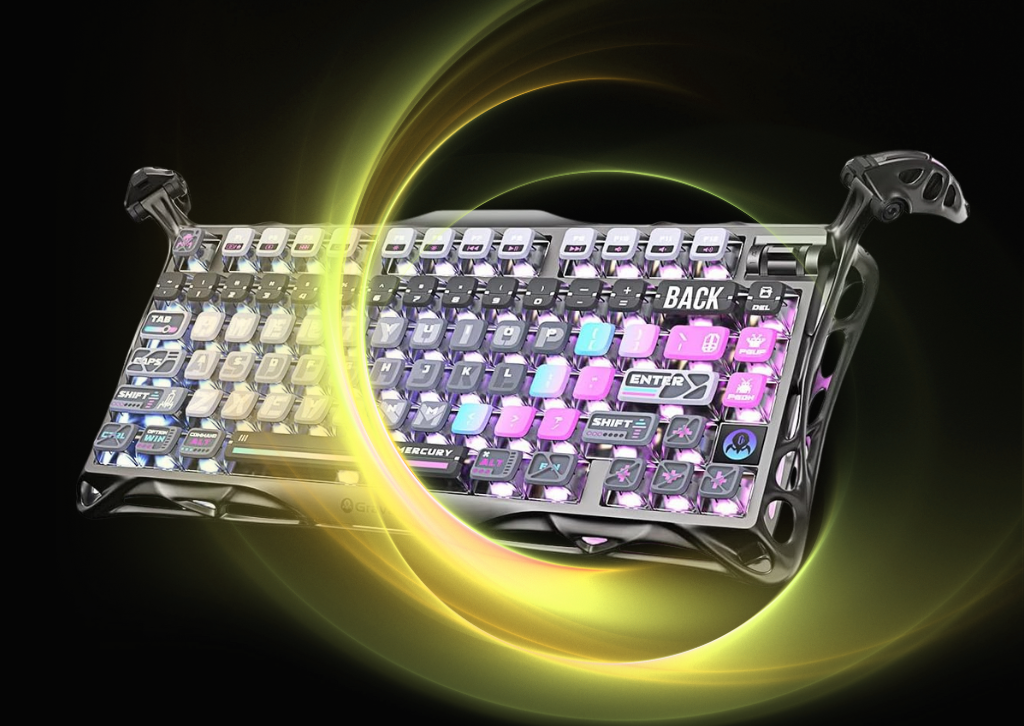
The GravaStar Mercury K1 Pro is a keyboard that refuses to be ignored. From the moment you unbox it, this wireless mechanical gaming keyboard makes a bold statement with its distinctive sci-fi aesthetic that looks like it was pulled straight from a cyberpunk universe.
Design: Love It or Leave It
GravaStar has built its brand on unconventional design, and the Mercury K1 Pro is no exception. The keyboard features a striking futuristic shell with angular, almost alien-like contours and integrated RGB lighting that pulses through translucent sections. The space-age design includes textured accents and a unique form factor that definitely won’t appeal to everyone—but that’s precisely the point. If you want a keyboard that doubles as a conversation piece, this is it.
The build quality feels solid despite the adventurous aesthetics. The materials have a premium heft to them, though the unconventional shape does mean a slightly larger desk footprint than traditional keyboards.
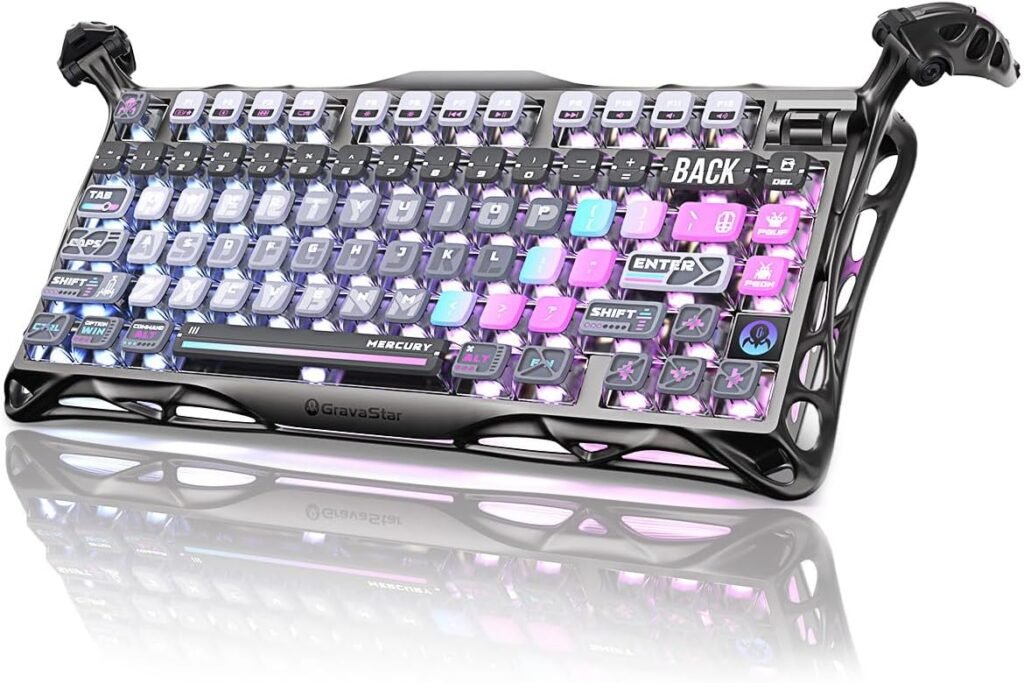
Performance: Gaming Chops That Deliver
Beyond the eye-catching exterior, the K1 Pro delivers where it counts. The mechanical switches provide satisfying tactile feedback with good responsiveness for gaming. The wireless connectivity (supporting both 2.4GHz and Bluetooth) performs reliably with minimal latency—crucial for competitive gaming. Battery life is respectable, easily lasting through extended gaming sessions.
The hot-swappable switches are a welcome feature for enthusiasts who like to customize their typing experience, and the keyboard supports various switch types. RGB customization offers plenty of lighting effects to match the dramatic aesthetic.
The Verdict
Pros:
- Genuinely unique, standout design
- Solid wireless performance with low latency
- Hot-swappable switches
- Good build quality
Cons:
- Polarizing aesthetic won’t suit minimalist setups
- Premium price for what you get
- Larger footprint due to design elements
Bottom line: The GravaStar Mercury K1 Pro is for gamers who want their peripherals to make a statement. If you’re drawn to cyberpunk aesthetics and don’t mind paying a premium for distinctive design, this keyboard delivers both style and substance. However, if you prefer understated gear or prioritize pure value, there are more conventional options that offer similar performance at lower prices.
Rating: 7.5/10 – A solid gaming keyboard wrapped in an audacious shell that will either captivate or alienate you.

You’ve found the best place for all your computer and computer accessory reviews
-

 Photography3 months ago
Photography3 months agoSony FE 16mm f/1.8 G Review: The Ultra-Wide Prime for the Modern Creator
-
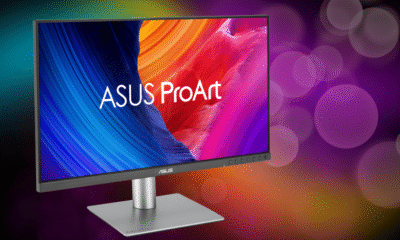
 Computers3 months ago
Computers3 months agoAsus ProArt Display 6K PA32QCV Review: A Visual Feast for Professionals
-

 Tablets5 months ago
Tablets5 months agoClash of the Titans: 13″ iPad Pro M4 vs. Samsung Galaxy Tab S10 Ultra – Which Premium Tablet Reigns Supreme?
-

 Home Tech3 months ago
Home Tech3 months agoThe Guardian of Your Threshold: An In-Depth Review of the Google Nest Doorbell
-

 Computers4 months ago
Computers4 months agoASUS Zenbook Duo: A Pretty Awesome Dual-Screen Laptop
-

 Photography4 months ago
Photography4 months agoAdobe’s “Project Indigo” is the iPhone Camera App We’ve Been Waiting For, and It’s Awesome
-

 Photography3 months ago
Photography3 months agoDJI Osmo 360 go: The Next Generation of Immersive Storytelling?
-

 Health Tech3 months ago
Health Tech3 months agoLumen Metabolism Tracker: A Deep Dive into Your Metabolic Health
-

 Computers4 months ago
Computers4 months agoApple Mac Studio Review: A Desktop Powerhouse Redefined
-

 Home Tech3 months ago
Home Tech3 months agoRevolution R180 Connect Plus Smart Toaster: More Than Just Toast?
-

 Computers4 months ago
Computers4 months agoSamsung 15.6” Galaxy Book5 360 Copilot AI Laptop: A Deep Dive into the Future of Productivity
-

 Buying Guides4 months ago
Buying Guides4 months agoThe Ultimate Workout Soundtrack: The Best Wireless Headphones for Your Fitness Journey















